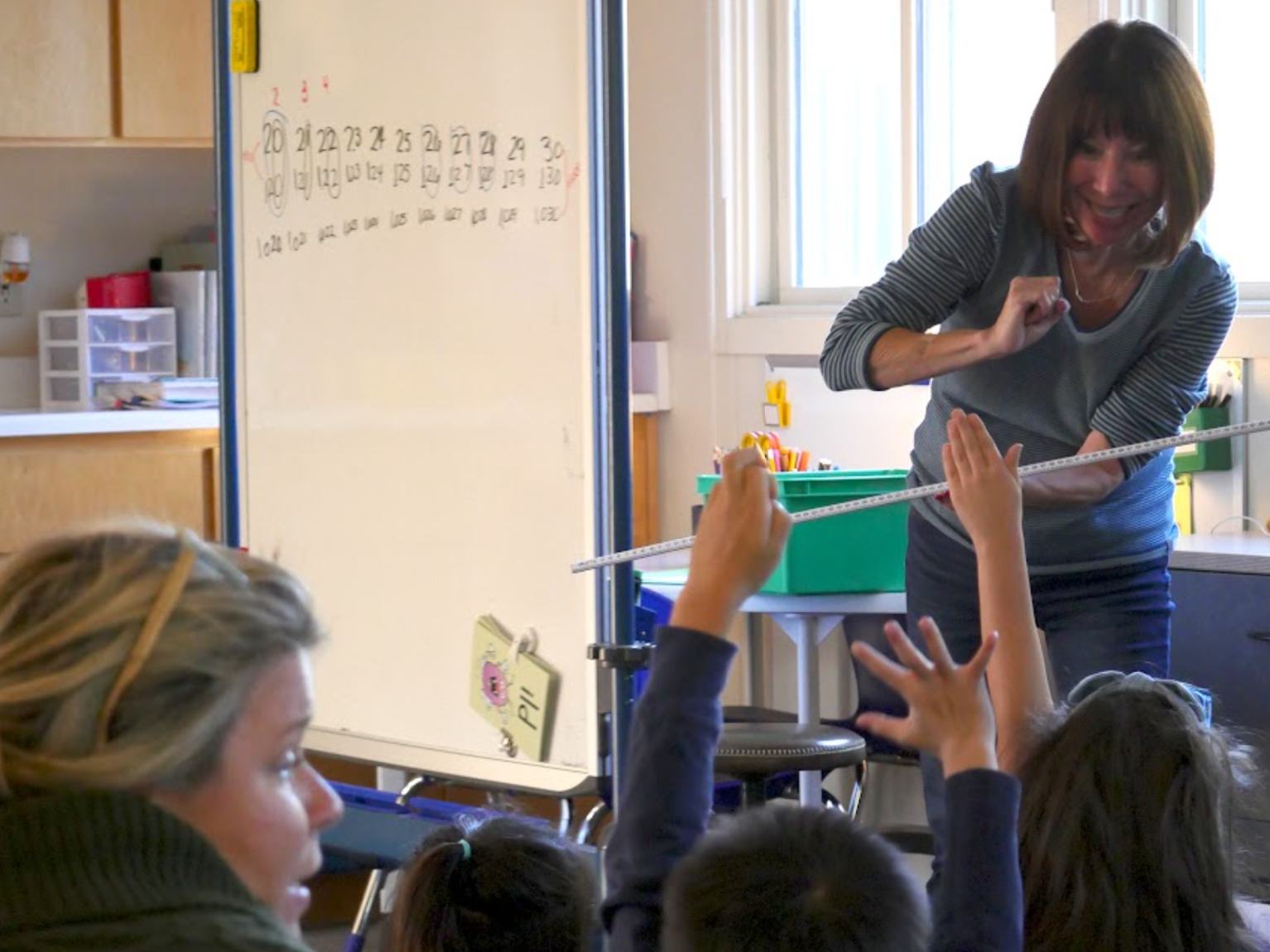“Hold your finger here. No wait, it’s moving! We could make a little tiny pencil mark so we know?”
2nd Grade Mathematicians are expanding their measurement skills to include metric units of distance/length and simple conversions. Last year in first grade, students expressed length in terms of numbers of a repeated item (like, this paper is 17 paper clips long) without gaps and overlaps. This week, they used meter sticks, 30-centimeter rulers, and unit cubes (which are one cm each dimension) to measure the length of some very large and small wild reptiles.
Represented by life-size paper cutouts on the floor (no actual alligators in this classroom!), students worked in a small group to solve problems like, what can we do if the ruler isn’t long enough to reach the end of this very long animal? How can we keep track of our total so far as we add on? Students made predictions, and noticed the shortcomings and affordances of each tool. “There’s actually a little space at the end [of this ruler] after the 30 [cm mark]. I know how to fix it!”
There’s actually a little space at the end [of this ruler] after the 30 [cm mark]. I know how to fix it!
They generated ways to improve their own measurement and to solve problems as they carefully observed each tool. “Wait a minute, if this [meter stick] is 100 centimeters, why does this last number say 99??”
They also made connections to understand the relationship between centimeters and meters, building off the prior knowledge of how many “cents” are in one dollar. Their homework in math this week continues to build their metric measurement and simple conversion skills, with added challenge problems for students who are seeking it.

